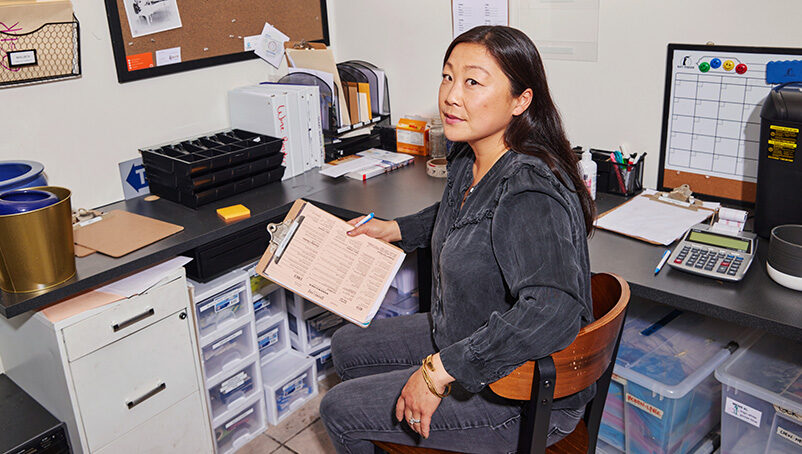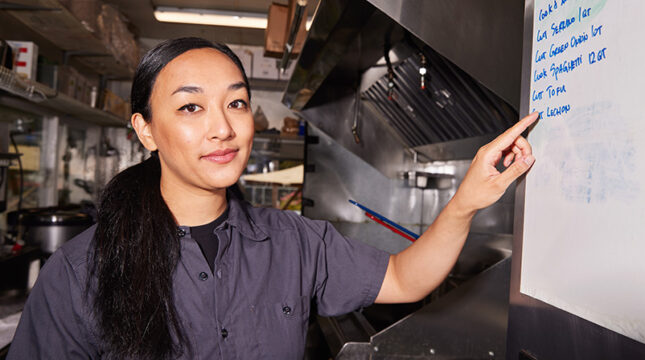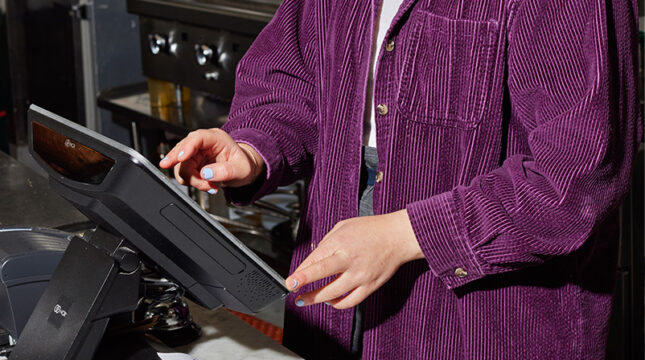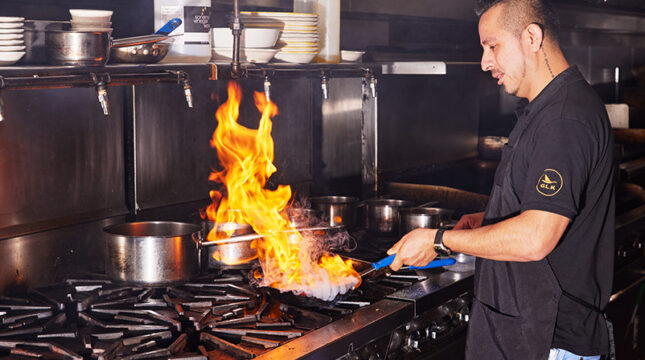Your restaurant’s profits are being squeezed at every turn by rising ingredient costs, labor shortages and supply chain challenges. But the steady climb of inflation, in combination with pent-up consumer demand, means this could be exactly the right time to revisit your menu pricing.
Diners are also feeling your pain when buying ingredients for dinner. The Consumer Price Index Summary, a monthly report issued by the U.S. Bureau of Labor Statistics, revealed that the cost of eating at home has risen faster (6.4%) than the cost of dining out in the past year (5.8%).
In other words, even if your prices are higher, they still look like a good value to families with soaring grocery bills.
It’s scary to adjust your restaurant menu pricing, but you won’t be alone if you make the leap.
A recent survey from the payment processing company Square discovered that nearly half of all restaurants plan to trim or completely change their menu.
Large chains like Domino’s and Burger King have developed a clear, two-fold restaurant pricing strategy: shrinking portions and raising prices.
While the value meal may be going away with inflation, the idea of providing value to your customers is still a key part of menu pricing. We put together the five steps for developing your restaurant pricing strategy and how to explain your decision to customers.
How to figure out your restaurant menu pricing
With fluctuating ingredient prices and a fragile supply chain, setting the prices on your menu seems like one of those carnival games you can’t win. But if you focus on the elements under your control, you can build a menu that is profitable and pleasing to customers.
1. Survey the competition
You know the restaurants in your space. Take a look at their menu pricing and compare it to what you charge for similar dishes. Understanding what’s happening at other restaurants will help you see current market trends, as well as your own customer’s expectations.
Remember that knowing your competitors’ prices doesn’t necessarily give you insight into their profits. You likely have different labor or rent costs that should factor into pricing out your menu.
2. Standardize your recipes
The next step in building a clear picture of your food costs is to standardize your recipes.
By writing down the steps and precise measurements for each ingredient, you know exactly how much caramelized pork with eggs costs to make. You’ll gain insight into the prep costs for your signature dish, as well as what it would take to scale up a special if it becomes a regular addition to the menu.
You might even cut down on food waste and expenses by identifying new ways to use scraps in soups or sauces before they spoil.
You’ll also provide a more consistent experience to customers — the eggs will always be made the same way — while finding it easier to forecast costs.
3. Explore menu costing
Menu costing is when you add up the cost and revenue of each item on your menu.
Most successful restaurants will attempt to keep food and beverage costs between 28% and 35%. In addition to rent, the other major expense is labor, which can range from 25% of the budget at a fast-food eatery to 40% in a sit-down restaurant.
If you discover there’s a difference between the expected costs in your restaurant business plan and actual costs once you’ve opened, that’s when you know it’s time to raise prices.
Use a simple formula (your food costs divided by your ideal food and beverage cost percentage) to determine the new price of a dish. For example:
Fried Rice
$3 in food costs / 30% ideal food cost percentage = $10 for fried rice on your menu.
Remember, you’re not just raising prices with menu costing. You’re aiming for a profit margin that keeps your restaurant healthy.
4. Get insights from vendors
Now that you’ve taken the time to understand everything happening in your restaurant, leverage your relationship with vendors to learn what’s going on in the world around you.
Ask how other restaurateurs are navigating delays or see if your vendor has suggestions when a certain ingredient like avocados might suddenly be unavailable. Get insight into the possibility of future shortages so you can make adjustments to your menu pricing proactively.
The information you learn won’t just impact how you get ingredients; it will also improve your process. You might alter your delivery schedule to avoid waste or spoilage or discover you’re able to order ingredients in bulk and ask for a discount.
5. Relaunch your menu
With a solid grasp of your costs and what others are charging, start adjusting your menu. Your point-of-sale system will show what sells well and what dishes are duds. Take off the meals with low margins and low sales.
Think of your menu as a living thing in the future. Add specials to bring in new customers. Keep your prices in tune with market prices.
This is also your opportunity to draw more attention to the dishes that make you the most money with a bit of menu engineering. Place them in prominent places, add new information, or highlight a dish with a border or different color that catches a diner’s eye.
How to communicate new menu prices to customers
You’re naturally worried about how your customers will react to paying more for dinner. This is where you rely on the relationship you’ve built with regulars and open, direct communication with new diners.
Be transparent
Tell your customers why the cost of their dish is increasing. By offering context for your menu pricing decisions, you help diners justify spending more money. Explain that a pricing change keeps service at the same levels and ensures you have the resources to make pho overnight.
Give them time to adjust
You’re trying to avoid shocking your customers. Don’t adjust your menu instantly.
Instead, give your customers the chance to prepare for the idea that a dish is slightly more expensive by telling them when the price will go up well ahead of time.
Update your prices online
Manage your customer’s expectations before they step inside your restaurant.
Consider writing an explainer on social media like Instagram or Facebook. Then, update the prices on your online menu so a guest isn’t surprised that a pulled pork sandwich is now double digits.
How NEXT Insurance helps restaurant owners
NEXT Insurance is committed to helping restaurant owners protect and grow their business, especially amid changes.
We know you’re busy and need reliable restaurant insurance coverage at an affordable price. That’s why we built a fast and easy way to get affordable restaurant insurance online and secure your certificate of insurance in about 10 minutes.





